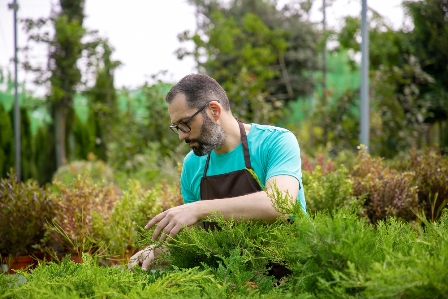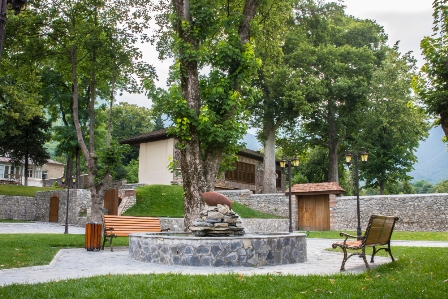In the realm of creating breathtaking outdoor spaces, landscape design stands as an artistic endeavor that merges aesthetics, functionality, and nature’s beauty into harmonious compositions. The allure of a well-designed landscape lies not only in its visual appeal but also in its ability to evoke emotions and create a sense of connection with the environment. We understand the significance of mastering the art of landscape design, and through this comprehensive guide, we aim to equip you with the principles and practices that can transform your outdoor space into a mesmerizing sanctuary.
Understanding the Foundation
The Power of Landscape Principles
Landscape design is anchored in a set of principles that lay the groundwork for creating visually pleasing and balanced outdoor spaces. Unity, balance, contrast, rhythm, and emphasis are the cornerstones that guide every design decision. Unity ensures all elements work harmoniously, while balance guarantees equilibrium among different components. Contrast and emphasis create focal points, directing attention where desired, and rhythm instills a sense of movement within the landscape.
Embracing the Site Analysis
Before embarking on any design journey, a thorough site analysis is crucial. Every landscape possesses unique characteristics like topography, soil type, climate, and existing vegetation. By comprehending these aspects, you can tailor your design to harness the site’s strengths and mitigate its challenges. A successful landscape design respects and complements the natural attributes of the site.
Designing with Purpose
Functional Spaces for Every Need
Effective landscape design extends beyond aesthetics, ensuring that the outdoor space serves its intended purpose. From serene relaxation areas and vibrant entertainment zones to practical pathways and efficient drainage systems, each facet of the landscape must be curated with a specific purpose in mind. This amalgamation of beauty and functionality elevates the experience of the space.
Plant Selection and Biodiversity
Plants breathe life into the landscape, bringing color, texture, and fragrance. Selecting the right plants goes beyond mere aesthetics; it involves understanding local ecosystems and fostering biodiversity. Native plants not only thrive in their natural environment but also contribute to the local ecosystem by attracting pollinators and supporting wildlife.
Crafting the Masterpiece
The Art of Hardscaping
Hardscaping introduces non-living elements like pathways, walls, and patios, adding structure and functionality to the landscape. The selection of materials, textures, and colors must harmonize with the surrounding environment. Well-designed hardscapes create a seamless transition between indoor and outdoor spaces, enhancing the overall appeal.
Color Palettes and Visual Appeal
Color plays a pivotal role in landscape design, evoking emotions and setting the mood. A well-thought-out color palette can enhance the natural beauty of the space. Warm colors like reds and yellows exude energy, while cool tones like blues and greens induce calmness. Achieving the right balance of colors ensures a visually pleasing and inviting landscape.
Maintaining the Vision
Sustainable Practices for Longevity
Sustainability is at the heart of responsible landscape design. Implementing eco-friendly practices such as efficient irrigation systems, mulching, and using native plants reduces environmental impact and conserves resources. A sustainable landscape not only thrives but also contributes positively to the ecosystem.
Nurturing with Maintenance
A well-designed landscape requires consistent care to preserve its allure. Regular maintenance tasks, including pruning, mulching, and pest control, ensure the longevity of the landscape. Adapting maintenance practices to the changing seasons keeps the outdoor space vibrant and enchanting year-round.
FAQs Here are answers to some frequently asked questions about Mastering the Art of Landscape Design
Absolutely! While professional guidance can be valuable, many individuals successfully design their landscapes by studying design principles and experimenting with different arrangements.
Consider factors like climate, soil type, sunlight exposure, and water availability. Native plants often thrive in their natural environment and require less maintenance.
Aerate the soil, fertilize regularly, mow at the appropriate height, and water deeply but infrequently. These practices encourage healthy root growth and vibrant greenery.
Both approaches have their merits. Symmetry lends a formal and organized look, while asymmetry adds a dynamic and naturalistic feel. Choose the style that aligns with your preferences.
Strategic design can create the illusion of space. Incorporate diagonal lines, use lighter colors, and avoid clutter. Mirrors and vertical gardening can also add depth.
Lighting enhances the atmosphere and extends the usability of outdoor spaces. Use a mix of ambient, task, and accent lighting to highlight key features and create a magical ambiance.
Conclusion
In the journey of mastering the art of landscape design, embracing principles, understanding the site, designing with purpose, and nurturing the creation are integral steps that culminate in breathtaking outdoor spaces. At [YourCompany Name], we are dedicated to crafting landscapes that transcend beauty and evoke emotions. Whether it’s a tranquil garden, a lively entertainment area, or a serene meditation spot, our expertise in landscape design is your gateway to a harmonious and captivating outdoor sanctuary.





